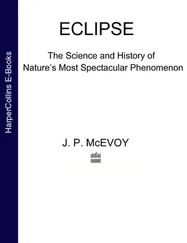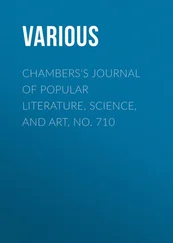Park and Ha [18] investigated the effect of lattice structure of wax crystals on the glossiness of wax-oil systems. Adding a branched microcrystalline wax with lower T mto ceresin wax in polyglyceryl-2-tri-isostearate oil reduced the hardness of wax-oil gels, enhancing the gloss. The reduction of wax-oil gel hardness was due to the enlarged and loose lattice structure of ceresin wax crystals in the presence of branched wax, and decreased crystal density as observed by SEM. However, when adding n-paraffin wax with lower T mto ceresin wax, the dense lattice structure of wax crystals did not change much; hence, the hardness of wax-oil gels was slightly reduced, resulting in a low glossiness from the wax-oil gels.
Similarly, Miyazaki and Marangoni studied the structure and mechanical properties of straight-chain paraffin wax (T m= 72°C-74°C) and polyethylene wax (T m= 83°C-90°C) in the select oil isotridecyl isononanoate [19]. Their results showed that PE wax-oil system had a higher Young’s modulus and yield stress than the paraffin wax- oil system because the size of the PE wax cells was smaller as observed by cryo-SEM.
For a long lasting color lipstick, the crystallization of wax from the formulation containing silicone resin and volatile oils posed a challenge to create rigid structure for a solid lipstick. In the long-wear lipstick formulation, the volatile oil, isododecane, has low viscosity and is a good solvent for PE wax. In order to create a rigid solid form, high amount of PE wax is used to solidify the formulation. As a result, the attributes of wear, spreadability and sensorial perception of the solid lipstick are sacrificed because the solid lipstick is too hard to give a good deposit and smooth application. To solve this problem, the blend of high melting and low melting PE waxes is used [20]. Furthermore, adding a small amount of high melting alcohol wax to the blend of PE waxes helped to achieve the right structure of the lipstick with good deposit and maintaining long-lasting color.
Nicholas and Brooks reported the use of hyperbranched polyalphaolefin waxes (HBWs) to enhance the hardness of lipstick [21]. Increasing the molecular weight and branch length, HBW can exhibit from liquid to high melting solid wax. When blending a small amount of short branch length HBW (T m= 41°C) with high melting point polyethylene wax in volatile oil, isododecane, the hardness of the lipstick was enhanced. The SEM showed that adding HBW to PE wax created more uniform and smaller crystal structures. They concluded that the HBW acted as a compatibilizer between isododecane and PE wax, resulting in smaller crystal sizes and enhancing both the stability and hardness of the lipstick.
Kose [22] developed a new technology to control the ultra-fine structure of lipstick in order to deliver high shine and smooth application for consumers. They controlled the interior wall of wax structures, which is known as card-house structure, by 200 times smaller than the existing wax-oil gels. By utilizing amorphous polypropylene as a thin amorphous layer between the crystalline phases, the coating of applied lipstick became more uniform and shiny on the lips.
To enhance the hardness of the low melting wax in oil, Endo and Shibata blended the high melting point alcohol (T m= 80°C) with low melting point rice bran wax (T m= 72°C) in macadamia nut oil [23]. The gel hardness improvement was explained by the disappearance of spherical clusters present in the gel and the creation of more uniform structure of the oil-wax blend compared to the single wax gel system as observed by SEM.
Tavernier et al . [24] investigated the crystallization behavior of high and low melting wax blend in the rice bran oil. The hardness of the oil-wax oelogel was much enhanced when a high T mrice bran wax (RBW) or a high T msunflower wax (SFW) was combined with a low T mberry wax (BEW) in oil. The synergistic property of the wax blend was discussed through crystal morphology and sequential crystallization of binary waxes, at which high T mwax crystallized first with large size and low T mwax crystallized later with much smaller size. The hardness enhancement of oil-binary wax blend system was explained through sintering effect at which small crystals formed bonding between large crystals of the high T mwaxes, creating a stronger cohesive oil-gel network.
Maru and Lahoti used sunflower wax (T m=79°C) to replace the carnauba wax which was a hard wax in the standard lipstick formulation [4]. Their results showed that the quality of the lipstick containing sunflower wax was the same as the one containing the carnauba wax. The hardness of new lipstick was reduced and the deposit increased but not significantly.
Budai et al ., studied the hardness of the lipsticks containing natural oils and natural waxes [6]. The natural oils were sunflower oil, castor oil, jojoba oil, and coconut oil. These oils were blended with either carnauba wax, or candelilla wax or yellow beeswax at various ratios. The results showed that the coconut oil, jojoba oil and carnauba wax had the strongest influence on the thermal parameters of the sticks such as softening point and drop point. The compression strength or hardness of the sticks could be achieved even with only 1% to 2% for both candelilla and carnauba waxes.
2.3.2 Factors Affecting Oil-Wax Structures: Oil Polarity
Another way to improve the hardness of oil-wax gel structure is to utilize the crystallization of wax in polar oils. Oil type and oil polarity have strong influence on the solubility of waxes which will affect the crystallization kinetics, crystal morphology, crystal size, crystal density and hardness of the oil-wax solid systems. For example, Imai and coworkers investigated the effect of various oil polarities on the hardness of the paraffin wax in oil-wax systems. They found that by increasing the polarity of oil, the gels became harder because the surfaces of crystals were rougher and the interconnection between wax crystals was tighter in the harder oil-wax gels, as revealed through SEM [17].
Table 2.5is the summary of wax crystal morphologies observed from optical light microscopy (OLM) and polarized light microscopy (PLM) for some natural waxes in various oils reported for the oleogel systems [7, 8, 10, 24–30, 32]. Depending on the solubility and chemical composition of oils, natural waxes can develop different morphologies which contribute to the hardness of the oil-wax gels.
For example, beeswax exhibits 2 different types of crystals: spherulite and needle-like morphologies depending on the oil. Rice bran wax crystal has a thin long needle-like shape in olive oil, but exhibits a dendritic shape in rice bran oil and a round shape in paraffin oil.
Table 2.5 Crystal morphology of natural waxes in oil-wax gel systems.
| Natural wax |
Solvents/natural oils |
Oil-wax crystalmorphology |
| Beeswax (BW) |
TriglycerideCanola/soybean/sunflower oils |
Large spherulite crystals |
|
Corn oil/olive oil |
Needle-like crystals |
| Sunflower wax (SFW) |
Acetone/benzene/octyl acetateSunflower/soybean oilsCanolaRice bran oil |
Thin plate-like crystals Long fibrous crystals Tiny needle-like crystals |
|
Triacetin/ethyl acetate/hexane/heptane |
Spherical crystals |
| Carnauba wax (CRW) |
Olive oilCanola |
Small spherulites |
| Candelilla wax (CLW) |
Safflower oilOlive oilCanolaRice bran oil |
Small crystals Small spherulites |
| Rice Bran wax (RBW) |
Olive oilSalad oil (canola/soybean) |
Thin long needle-shape crystals |
|
Rice bran oil |
Dendritic shape crystals |
|
Liquid paraffin oil |
Round crystals |
Blake and Marangoni [30] reported that the needle-like morphology was observed for waxes with homogeneous compositions such as beeswax (BW), sunflower wax (SFW) and rice bran wax (RBW). Carnauba (CRW) and candelilla (CLW) waxes with heterogeneous composition were used to develop a microplatelet morphology. The DSC and XRD studies reveal that wax morphology is strongly dependent on wax composition. A wax with a chemical homogeneous composition forms a lamellar structure which organizes into needle-like crystal. A wax with a chemical heterogeneous composition develops a less ordered and smaller crystal structure.
Читать дальше












